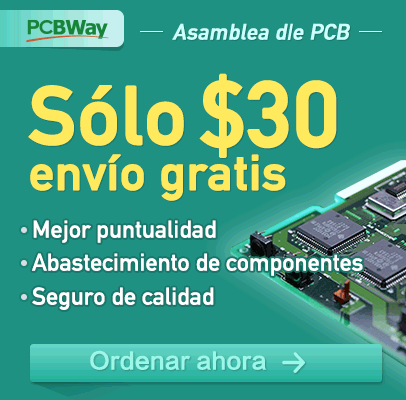Boost converter - FEEDBACK
Connect everything as in the schematic below, download and upload the next code to your Arduino and start moving the potentiometer. Observe the otput on the oscilloscope.
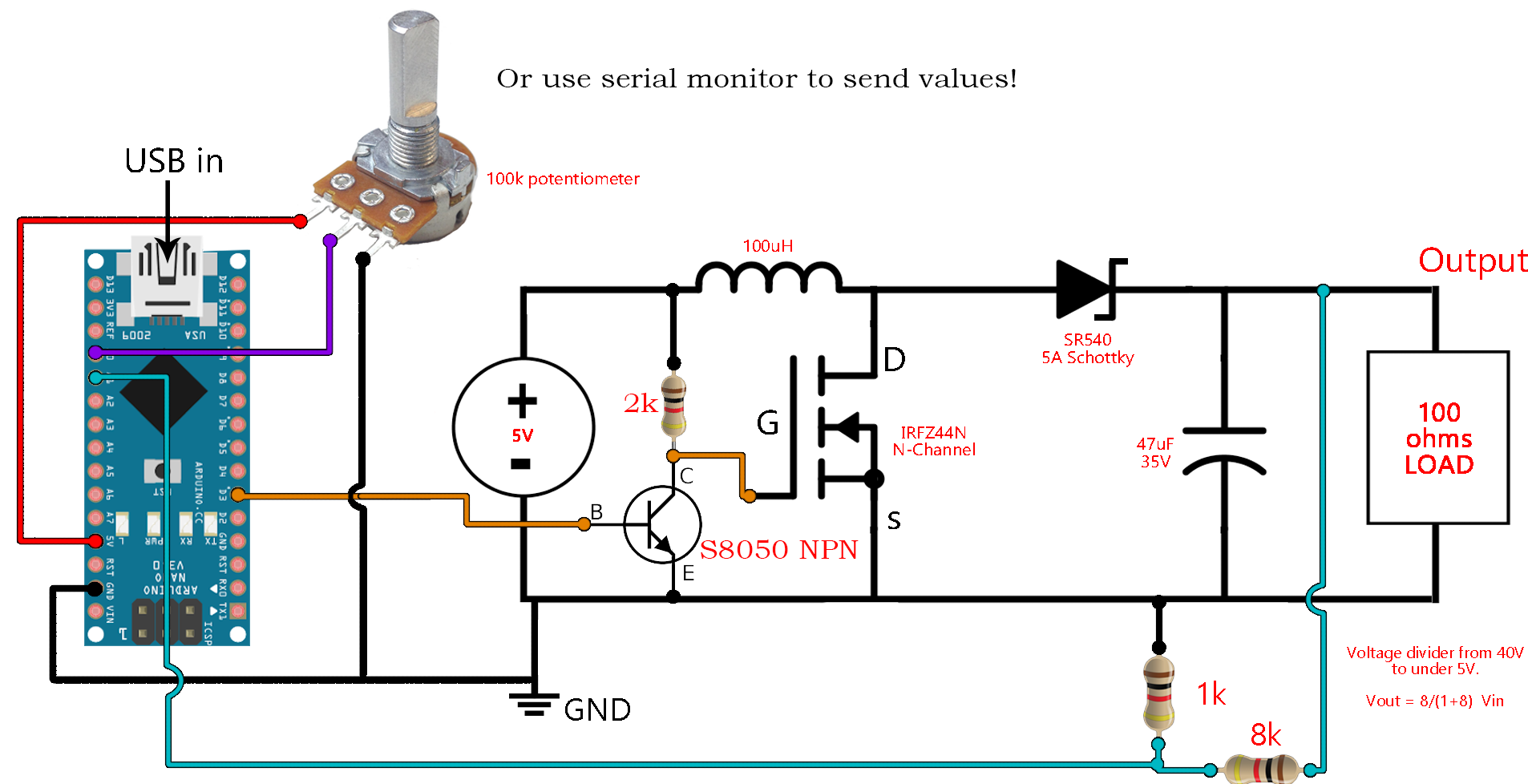
Download the
Or copy the next code
/*
* This is an example code for a BOOST converter circuit made with arduino + feedback
* I've used arduino NANO. We have to set the timer of the PWM on pin D3
* The feedback is connected to A1 and we set the desired voltage with a
* potnetiometer connected to A0.
*
* Subscribe: http://www.youtube.com/c/electronoobs
* webpage: http://www.electronoobs.com/eng_circuitos_tut10.php
*/
int potentiometer = A0; //The input from the potentiometer is A0
int feedback = A1; //The feedback input is A1
int PWM = 3; //Digital pin D3 por PWM signal
int pwm = 0; //Initial value of PWM width
void setup() {
pinMode(potentiometer, INPUT);
pinMode(feedback, INPUT);
pinMode(PWM, OUTPUT);
TCCR2B = TCCR2B & B11111000 | B00000001; // pin 3 and 11 PWM frequency of 31372.55 Hz
}
void loop() {
float voltage = analogRead(potentiometer); //We read the value of the potentiometer, which is the desired value
float output = analogRead(feedback); //We read the feedback, which is the real value
//If the desired value is HIGHER than the real value, we increase PWM width
if (voltage > output)
{
pwm = pwm+1;
pwm = constrain(pwm, 1, 254);
}
//If the desired value is LOWER than the real value, we decreaase PWM width
if (voltage < output)
{
pwm = pwm-1;
pwm = constrain(pwm, 1, 254);
}
analogWrite(PWM,pwm); //Finally, we create the PWM signal
}

 About me
About me  History
History  Let's learn
Let's learn  Contact us
Contact us  Arduino tutorials
Arduino tutorials Circuits tutorials
Circuits tutorials  Robotics tutorials
Robotics tutorials Q&A
Q&A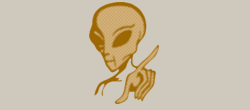 Blog
Blog  Arduino
Arduino 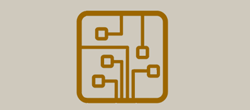 Circuits
Circuits Robotics
Robotics  Modules
Modules 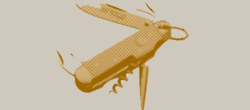 Gadgets
Gadgets  Printers
Printers  Materials
Materials 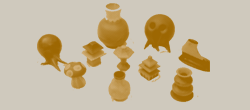 3D objects
3D objects  3D edit
3D edit  Donate
Donate  Reviews
Reviews  Advertising
Advertising